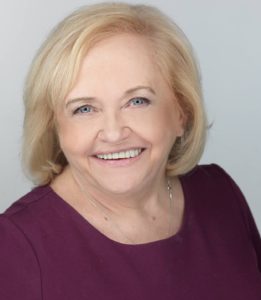Migraine Disease: Then and Now
December 10, 2020
By Mary Franklin, MA
This fall, Congress introduced a first-of-its-kind resolution that acknowledged the ways migraine disease affects millions of Americans. For me and the headache and migraine disease community, the action was acknowledgment of how far we’ve come in gaining recognition of the debilitating condition that affects 39 million Americans.

Not so long ago, migraine disease was scarcely recognized by anyone, least of all members of Congress. When I started as a nurse, working alongside patients 50 years ago, just about every aspect of headache medicine was different. Now, on the verge of retirement, I’m astounded at the strides made. I’ve seen great leaps in three areas:
- The Population Affected by Headache and Migraine Disease. When I started nursing, headache was often dismissed as a trivial “women’s disease.” It’s now accepted that people from all walks of life are affected, including men and especially veterans. About 36% of U.S. veterans who served a one-year deployment were diagnosed or showed signs of migraine disease.
- Awareness and Acceptance. The health care providers who worked with headache patients were among the first to advocate for comprehensive care, sometimes to the chagrin of their peers. I recall the opening of the first inpatient headache unit in 1980. It was a monumental step for headache medicine, yet not everyone understood. One provider asked, “Why do those patients get a special unit? It’s just a headache.”
While those who experience migraine disease are sometimes still viewed with skepticism, more people understand the invisible disease now. And there’s greater recognition of the condition’s impact on the whole person – physically and mentally.
- Treatment. For so long, people experiencing headache and migraine disease just felt defeated. There were truly no effective treatments. The introduction of triptans in the 1990s was lifechanging and since then, there’s been an explosion of research and new preventive treatments. While none is a cure and many have undesirable side effects, patients now have nearly a dozen options to try – so long as their insurance doesn’t stand in the way.
Despite these strides, there remains great opportunity to further improve the lives of people who live with headache and migraine disease.
For example, I urge employers to engage more. They can make simple workplace accommodations, such as limiting noise and fluorescent lights, to reduce triggers. They can also ensure their management team is understanding of the condition. Employers can also ensure their insurance covers a wide range of treatments.
Working together, we can continue making progress for people with headache and migraine disease. There’s a role for everyone – advocates, lawmakers, patients and providers – to help those affected by the condition break free from the stigma, receive much-needed treatment and get back to living their lives.

Mary Franklin, MA, is a lifelong headache and migraine advocate, and long-time partner of the Alliance for Patient Access and The Headache and Migraine Policy Forum. She is retiring from her position as the executive director of the National Headache Foundation.
Tags: Headache, PainCategorized in: Blog

